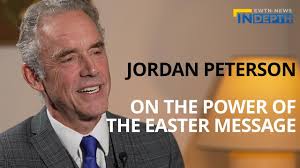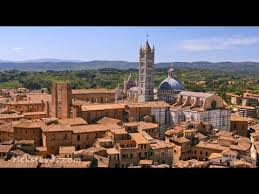God broke his eternal silence when he declared: “Let there be light.” (Gn 1:2) In that primordial light, God created all else that exists.
In the Prologue to his Gospel, St. John affirmed that before the beginning began, the Word already was – and that the Word was God and with God. God created all things through his Word, for in that Word was life. The life of the Word was the light of men. The Word’s life-giving light was the light of all men. This life-giving light shines in the darkness, and the darkness has not been able to overcome it. (Jn. 1:1-5).
Neither, within John’s Gospel, could the darkness of sin and death overcome the life-giving light of the incarnate Word. As God first created all through the life-giving light of his Word, so God re-created humankind, and all of creation, through his incarnate life-giving Word. “The Word became flesh and dwelt among us. . .and we have beheld his glory, glory as of the Son from the Father.” (Jn. 1:14) To see the glory of Jesus, the Father’s incarnate Son, is to behold the life-giving light of the eternal Word.
The Gospel for the Fourth Sunday of Lent is taken from John’s Gospel, chapter 9 – the story of the man born blind. Jesus first tells his disciples that the man was born blind to manifest the works of God, for he is “the light of the world.” Being “the light of the world,” Jesus heals the man born blind. He does so by spitting on the ground and making clay and smearing it on the blind man’s eyes.
Just as God, in the second creation story in Genesis, first formed man from the dust of the earth and breathed into man his divine breath, so Jesus is now replicating his Father’s work. He is re-creating the blind man by smearing his eyes with watered clay – the dust from which man was first created.
Jesus, he whom the Father sent into the world, then sends the blind man to wash in the Pool of Siloam; “Siloam” means “sent.” Thus, we find here a play on the word “sent” – almost in an amusing manner. Sent (Jesus) sends sent (the blind man) to Sent (the Pool of Siloam).
Having washed in the Pool of Siloam, the blind man now comes to see. He is physically healed. For the first time, he sees people, trees, buildings – the entire world around him. While the blind man now sees physically, however, he is still spiritually blind. He does not know the one who smeared mud on his eyes nor who sent him to the Pool of Siloam. He does not know the one whom the Father sent into the world. He does not know who Jesus is.

The now-seeing blind man is questioned by the Pharisees, for they were upset that Jesus healed on the Sabbath. They believe that in so doing, he cannot be from God. The blind man defends Jesus’ action by declaring that only one devoted to God can perform such an action as healing a man born blind. “It is unheard of that anyone ever opened the eyes of a person born blind. If this man were not from God, he would not be able to do anything.” Jesus is from God, for the Father sent him into the world to be the life-giving light of the world.
When he heard that the now seeing-blind man was tossed out of the Synagogue, Jesus found him and asked: “Do you believe in the Son of Man?” To which the man responded: “Who is he, sir, that I may believe in him?” The blind man sees physically, but now he wants to see spiritually, so that he can believe in the one God sent.
Jesus states: “You have seen him, and the one speaking to you is he.” The blind man has seen Jesus, but what he did not see is that Jesus is his Lord and Savior, but simply a man who can heal the physically blind. Now, truly seeing, the man born blind professes: “I do believe, Lord.”
The man “worshiped him,” as his Lord The blind man is now fully re-created. As the incarnate Lord, the Word made flesh, Jesus is the light of the world, the life-giving light that has overcome the darkness of sin with its curse of death.
What we perceive in this moving story of Jesus and the man born blind is the reality of the sacrament of baptism. All of us, because of the sin of Adam and Eve, are born blind. We are born of Adam’s flesh. Yes, we may see physically, but we possess Adam’s blind eyes. We do not see God.
Only through faith in Jesus and by being born anew in baptism, born again of water and the Holy Spirit, do we come to see Jesus as our Lord and Savior. Only in baptism do we come to abide in him who is the life-giving light of world. Only by abiding in Jesus are we transformed into Spirit-filled sons and daughters of the Father. In beholding the Father in union with Jesus, we are empowered by the Holy Spirit to cry out, “Abba, Father.”
The importance of baptism is a particular theme throughout the whole of Lent. It finds its full enactment during the Easter Vigil solemnity when new converts are baptized and the faithful renew their baptismal promises and are sprinkled with the Easter water. This renewal and sprinkling also takes place at all the Easter Masses and throughout the Easter Season.
In this baptismal enactment, God continues to declare: “Let there be light.” He ever desires that we see the divine light of Jesus, his Spirit-filled Word incarnate, for only in him do we possess the life-giving light that is eternal.
*Image: Christ Healing the Man Born Blind by Sebastiano Ricci, c. 1712-16 [Scottish National Gallery, Edinburgh]















